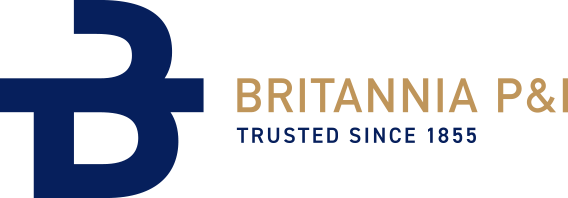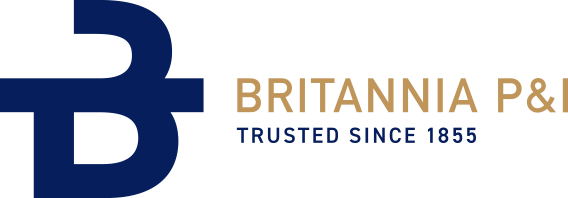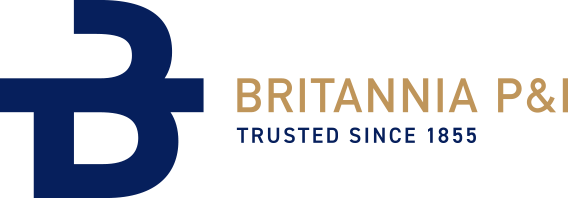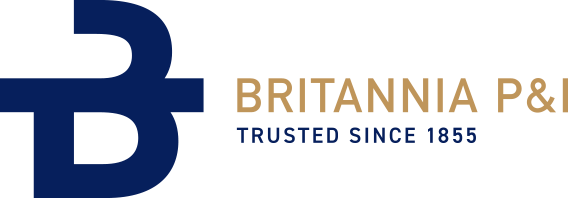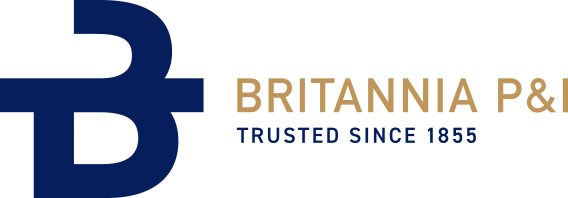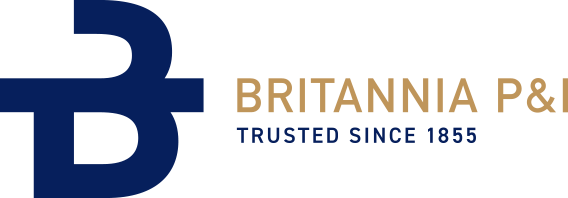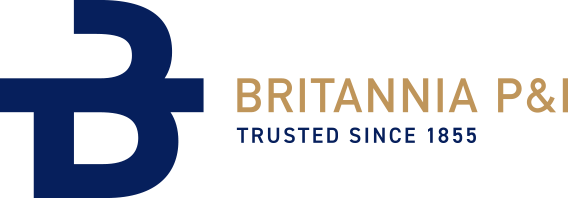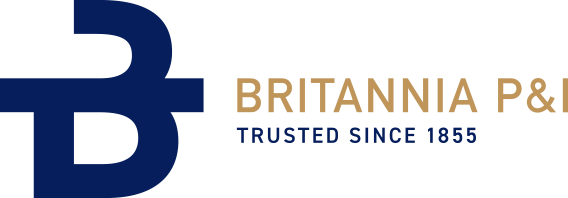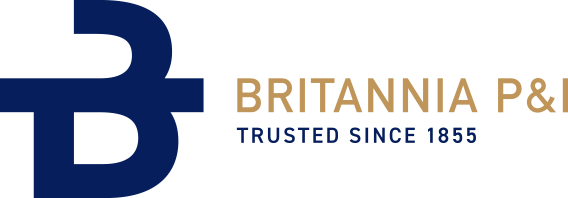Title Page
-
Site conducted
Condition Survey
-
Type of report
-
Ship Name:
-
IMO No:
-
Date survey completed
-
Location
-
Surveyor's name
-
Survey company:
-
Surveyor's ref. no.:
-
Order club:
- American Club
- Skuld
- Gard
- Swedish Club
- Britannia
- Japan Club
- London Steam-Ship
- North of England
- Shipowner’s
- Standard Club
-
Claim Incident no. (for Members' Record)
-
Club ref. no. (Survey ID):
-
This report, and any accompanying documentation or photographs, has been compiled for the sole use of the Club for insurance purposes only and should not be disclosed to third parties without prior written permission from the Club. The information contained in this report, and any accompanying documentation or photographs, is not exhaustive as to the general condition of the ship and should not be relied upon by members or by any other party as any assurance, representation or warranty as to the condition of the ship and nothing herein shall prejudice the Club's rights under the insurance policy in the event of a dispute between the Club and the member relating to the condition of the ship.
Part A
1. SHIP & CREW PARTICULARS
1.1 Ship Particulars
-
1.1.1 Ship's name:
-
1.1.2 Ex. names:
-
1.1.3 IMO No:
-
1.1.4 Flag state:
-
1.1.5 Builder:
-
1.1.6 Year built:
-
1.1.7 Class society:
- ABS- American Bureau of Shipping
- BV- Bureau Veritas
- CCS- China Classification Society
- CRS- Croatian Register of Shipping
- DNV GL
- IR- Indian Register of Shipping
- KR- Korean Register of Shipping
- LR- Lloyd’s Register
- NKK- ClassNK
- PRS- Polish Register of Shipping
- RINA
- RS- Russian Maritime Register of Shipping
- Non- IACS
-
If non-IACS class state classification body
-
1.1.8 Class notations:
-
1.1.9 Ship type & brief description:
-
1.1.10 GT:
-
1.1.11 DWT:
-
1.1.12 Last docking:
-
1.1.13 Last Class Renewal:
1.2 Crew Matrix
-
Add rank
- Master
- Chief Mate
- Chief Engineer
- 1st Engineer
-
Master
-
Nationality
-
Certificate of Competency (STCW Code, Class, Capacity, Grade, Limitation)
-
Flag state endorsement
-
Years in rank
-
Years this type of vessel
-
Years at sea
-
Years with vessel operator
-
Chief Officer
-
Nationality
-
Certificate of Competency (STCW Code, Class, Capacity, Grade, Limitation)
-
Flag state endorsement
-
Years in rank
-
Years this type of vessel
-
Years at sea
-
Years with vessel operator
-
Chief Engineer
-
Nationality
-
Certificate of Competency (STCW Code, Class, Capacity, Grade, Limitation)
-
Flag state endorsement
-
Years in rank
-
Years this type of vessel
-
Years at sea
-
Years with vessel operator
-
1st Asstt / 2nd Engineer
-
Nationality
-
Certificate of Competency (STCW Code, Class, Capacity, Grade, Limitation)
-
Flag state endorsement
-
Years in rank
-
Years this type of vessel
-
Years at sea
-
Years with vessel operator
2. CIRCUMSTANCES OF SURVEY
-
Describe in brief the circumstances under which the survey was carried out, such as, but not limited to, the date and the time the survey commenced and time of completion, if the Master was aware of the visit, the operational status of the vessel, type of cargo being handled, if applicable, and particular observations or information the Surveyor may consider to be of interest for the Club.
-
*Item not inspected (NI) during the inspection to be marked as NI (giving detailed reason for not carrying out the full inspection) in the 'Add note...'. If Not Applicable or Not Available - mark as N/A. If the answer is 'No' to a question (Failed item) - a clear-viewable/pin-point/focused/zoomed Photo (Media) to be added below the response.
Details
-
2.1 Ship's trading pattern:
-
2.2 Cargo onboard and last three cargoes
-
2.3 Master's name:
-
2.4 Company name on the ISM DOC:
-
2.5 Name of owner's representative:
-
2.6 Time under present management
-
2.7 Ballast tanks inspected - found satisfactory? (If Not Inspected - mention N/A or NI, and Reason)
-
State reason why not inspected
-
If yes, state which tanks inspected
-
2.8 Cargo holds/tanks inspected - found satisfactory? (If Not Inspected - mention N/A or NI, and Reason)
-
State reason why not inspected
-
If yes, state which cargo holds/ tanks inspected
-
2.9 Tightness Test of Hatch covers carried out - found satisfactory? (If Test Not done - mention N/A or NI, and Reason)
-
If Test not done - mention NI; state reason why not carried out
-
2.10 If yes, type of test carried out and equipment used (Make, Model, Cert number, Photo):
-
2.10 State reason
3. ENCLOSURE FOR ATTACHMENT OF RELEVANT DOCUMENTS
-
In this section all Survey-related scanned, image, eDocuments are uploaded (e.g: pdf, jpg, png, word, excel etc file). Suggested documents: Ship's Particulars, IMO Crew List, List of Statutory and Trading Certificates with Expiry date, CLASS Status Report, Last PSC Report, Latest Monthly ISM Safety meeting, Critical Equipment List, List of LSA & FFE with Service and Expiry date, GA Plan-digital, Capacity Plan-digital, Nav & Comm equipment list, Bridge Publication List, PMS digital copy, Last DD Report, Last Hull UT Report etc. ** INSTRUCTION TO SURVEYOR: a) Upload EACH DOCUMENT AS INDIVIDUAL File; b) DO NOT make a bundle of all documents together under one big file; c) Rename each document with proper Name and sequence number - e.g: 01. Ship's Particulars 02. IMO Crew List 03. Ship's Certificates 04. CLASS Report 05. Next document.....and so on.......
Part B
4. SURVEY QUESTIONNAIRE -GENERAL (All Ship Types, except Tugs & Barges)
-
For any No answers, an explanation is to be provided using the Add note function, if applicable. Photographs of all deficiencies are also to be provided.
4.1 Class and Statutory Certificates
-
4.1.1 Are the relevant class and statutory certificates valid?
-
4.1.2 Are certificates without any conditions, recommendations, exemptions or memoranda affecting safety of life, ship, cargo or environment?
-
Additional information
4.2 Shipboard management (Section to be completed taking into consideration time under present management)
-
4.2.1 Are internal audits carried out at regular intervals and are they satisfactorily reported? Add relevant comments, if applicable
-
4.2.2 Are safety meetings carried out at a regular interval and a protocol kept?
-
4.2.3 Are non-conformity / accident / near accident reports raised and handled in a satisfactory manner?
-
4.2.4 Are Masters' Reviews carried out and satisfactorily reported?
-
4.2.5 Is a Planned Maintenance System (PMS) implemented and kept up to date?
-
4.2.6 Does the vessel have a Critical Equipment List as required by the ISM Code?
-
4.2.7 Is efficient access control in place?
-
4.2.8 Are there contingency plans onboard to deal with emergencies and spills, as applicable?
-
4.2.9 Is a muster list available, current and prominently posted in relevant areas?
-
4.2.10 Is an adequate emergency command structure in place?
-
4.2.11 Are fire control plans posted, properly maintained and also available externally?
-
Additional information
4.3 Crew
-
4.3.1 Are at least officers proficient in Maritime English to communicate efficiently?
-
4.3.2 If crew is multinational is there a common language understood by all?
-
4.3.3 Does the company have a briefing / de-briefing policy for Master/Chief Engineers prior to joining/after signing off?
-
4.3.4 Is random or specific drug and alcohol testing carried out?
-
Additional information
4.4 Safe Working
-
4.4.1 As observed, are safe working practices, including work permit procedures, implemented and adhered to?
-
4.4.2 Are portable oxygen and gas detection meters, appropriate to the vessel type and cargo, provided and regularly calibrated?
-
4.4.3 Is relevant personal protective equipment and clothing, appropriate to the vessel type and cargo, provided and in use?
-
4.4.4 Is adequate lighting provided throughout the vessel?
-
4.4.5 Are alarms from cold stores and freezers in apparent satisfactory condition?
-
4.4.6 Are walkways, stairways, catwalks, ladders, platforms and handrails, as applicable, in apparent satisfactory condition throughout the vessel?
-
4.4.7 Are mobile safety guards such as rails, lines and wires etc., provided and in use?
-
4.4.8 Are derricks, cranes and other lifting equipment properly maintained / marked? Have periodical inspections and testing been carried out?
-
4.4.9 Are accommodation / pilot ladders, gangway, etc. in apparent satisfactory condition?
-
Additional information
4.5 Hygienic Standard and House Keeping
-
4.5.1 Are crew galley and pantries clean and tidy? Is fitted equipment in apparent satisfactory condition? Are suitable food handling procedures in place?
-
4.5.2 Are provision and cold stores clean, tidy and maintained to correct temperature?
-
4.5.3 Is the general house-keeping standard, including sanitation, satisfactory?
-
Additional information
4.6 Fire Safety
-
4.6.1 Is the fire detection system in apparent satisfactory condition?
-
4.6.2 Are fire pumps, mains, hydrants and monitors in apparent satisfactory condition?
-
4.6.3 Are fire stations in tidy condition and is it evident that the firefighting equipment has been tested in connection with firefighting drills?
-
4.6.4 Are there sufficient self-contained breathing apparatus and spare bottles?
-
4.6.5 Are self-contained breathing apparatus in good condition sufficiently charged and cylinders within test date?
-
4.6.6 Are emergency escape sets provided?
-
4.6.7 Are fire extinguishers and fire hose lockers in apparent satisfactory condition?
-
4.6.8 Are fixed fire-extinguishing systems in apparent satisfactory condition with release instructions posted?
-
4.6.9 Are combustible and hazardous liquids stored in designated spaces and provided with Material Safety Data sheets?
-
4.6.10 Are acetylene and oxygen bottles stored in well ventilated and securely, signed designated places?
-
4.6.11 Are main and emergency exits clearly marked and unobstructed?
-
4.6.12 Is the fire integrity, including fire doors, fire dampers, shutters and bulkhead penetrations (where visible) throughout the vessel in apparent satisfactory condition?
-
Additional information
4.7 Life Saving Appliances
-
4.7.1 Are lifeboats, rescue boats and their davits, in apparent satisfactory condition?
-
4.7.2 Has the manufacturer or their approved representative serviced the on-load release?
-
4.7.3 Are life rafts and hydrostatic releases properly secured / fitted and in apparent satisfactory condition?
-
4.7.4 Are life buoys of approved type in various locations and in apparent satisfactory condition?
-
4.7.5 Are life vests of approved type, properly stowed and sufficient in numbers?
-
4.7.6 Is the medicine locker sufficiently stocked, tidy and in date?
-
4.7.7 Are signs for safety equipment in place marked with IMO symbols and instructions written in the working language of the vessel?
-
4.7.8 Are emergency escape route fluorescent markings fitted and in apparent satisfactory condition?
-
Additional information
4.8 Pollution Control
-
4.8.1 Are save-alls and spill containment arrangements in apparent satisfactory condition?
-
4.8.2 Is the vessel apparently free from any hull, bulkhead, valve or pipe-line leakage, including hydraulic lines, liable to cause pollution or affect safe operations?
-
4.8.3 Is the vessel provided with an approved SOPEP / SMPEP and, if applicable, a VRP?
-
4.8.4 Is sufficient oil spill clean-up equipment available as per the SOPEP / SMPEP Manual?
-
4.8.5 Is the Oil Record Book Part I (and, if applicable, Part II) properly filled out and up to date?
-
4.8.6 Are bunkering / oil transfer procedures in place, and if observed, adhered to?
-
4.8.7 Is oily water separator in apparent satisfactory condition, instructions posted and 15ppm monitor calibrated? Can vessel staff demonstrate how to display the electronic data history of the OWS if so equipped?
-
4.8.8 Is a Garbage Management Plan in place and is the Garbage Record Book up to date?
-
4.8.9 Are appropriate procedures in place for switch over to low Sulphur fuel when trading in relevant areas?
-
4.8.10 Is there an approved Ballast Management Plan on board and is the Ballast Water Record Book properly completed as appropriate?
-
Additional information
4.9 Bridge, Navigation and Communication
-
4.9.1 Is bridge navigation and communication equipment in apparent satisfactory condition?
-
4.9.2 Is there an apparent working system in place to correct nautical charts and publications?
-
4.9.3 If applicable, have officers undergone an approved ECDIS training course and type specific familiarization?
-
4.9.4 If fitted, is the Bridge Navigational Watch Alarm System in apparent satisfactory condition?
-
4.9.5 If fitted, is the Voyage Data Recorder operational?
-
4.9.6 If VDR is fitted, is the Master aware of how to save and retrieve data in the event of an incident?
-
4.9.7 Are regular checks on VDR operation implemented and recorded to ensure that the complete dataset is being correctly recorded? Date of last check?
-
4.9.8 Are Bridge Procedures, Company and master’s Standing Orders in place and followed?
-
4.9.9 Are navigation lights in apparent satisfactory condition?
-
4.9.10 Is passage planning properly carried out and covering berth to berth?
-
4.9.11 Is emergency communication between bridge-engine room and bridge-steering gear room in apparent satisfactory condition?
-
4.9.12 Is external weather routing in use for ocean voyages? (For comment only, not considered a defect if weather routing not used.)
-
4.9.13 Is the vessel's condition verified and recorded including trim, list, draft and intact stability?
-
Additional information
4.10 Hull and Deck
-
4.10.1 Is the visible condition of shell plating in apparent satisfactory condition?
-
4.10.2 Is the visible condition of deck plating in apparent satisfactory condition?
-
4.10.3 Are hull markings legible?
-
4.10.4 Are vents and air / sounding pipes on deck in apparent satisfactory condition with efficient closing devices and clearly marked with the compartment they serve?
-
4.10.5 Are deck wiring, piping and cable runs in apparent satisfactory condition?
-
4.10.6 Are hatch covers, coamings, stays and connections to deck plating free of cracks &/or heavy corrosion?
-
4.10.7 Are weathertight doors and stores hatches fully operational and in apparent satisfactory condition?
-
4.10.8 Are windlasses, winches, rollers, fair leads, capstans, bollards and mooring lines in apparent satisfactory condition?
-
4.10.9 Are satisfactory emergency towing arrangements in place and in apparent satisfactory condition?
-
4.10.10 Are suitable vessel specific emergency towing procedures in place?
-
4.10.11 Are visible sections of anchor cables in apparent satisfactory condition?
-
Additional information
4.11 Ballast Tanks & Void Spaces
-
4.11.1 Are tanks and void spaces inspected apparently free from significant wastage, pitting and scale?
-
4.11.2 Is the corrosion protection (coating / anodes) in apparent satisfactory condition?
-
4.11.3 Is the inspected steel structure apparently free from buckling / fractures / doublers / temporary repairs / poor alignment etc.?
-
4.11.4 Are manhole covers in apparent satisfactory condition?
-
4.11.5 Are tanks free from any sign of oil contamination?
-
4.11.6 Is pipe-work passing through tanks / void spaces in apparent satisfactory condition?
-
4.11.7 Are ballast valves (hydraulic / manual) and actuating systems, if appropriate, in apparent satisfactory condition?
-
Additional information
4.12 Machinery Spaces
-
4.12.1 Are engine compartments, including bilges, clean tidy and free from combustible materials?
-
4.12.2 Is main and auxiliary machinery in apparent satisfactory condition and free from significant oil or water leakages and/or temporary drains?
-
4.12.3 Is the engine monitoring and control system fully operational and regularly tested?
-
4.12.4 Is main switchboard protectively located and surrounded by non-conducting mat?
-
4.12.5 Is main switchboard earth fault monitoring equipment operational and indicating a satisfactory status?
-
4.12.6 Are self-closing devices of sight glasses on all oil tanks fully operational?
-
4.12.7 Are self-closing devices on engine room sounding pipes fully operational?
-
4.12.8 Are exhaust manifolds on machinery free from leaks and shielded with intact insulation?
-
4.12.9 Are FO / LO pipes and flanges adequately shielded?
-
4.12.10 Are FO / LO purifiers and FO heaters / LO coolers and filters in apparent satisfactory condition?
-
4.12.11 Are engine spares properly stored and secured?
-
4.12.12 Does there appear to be sufficient spare parts?
-
4.12.13 Are ER pipe systems, sea suction and overboard valves free from apparent deterioration, leaks, temporary repairs and cement boxes?
-
4.12.14 Are ER gratings in place secured and in a clean and safe condition?
-
4.12.15 Is the steering gear free from hydraulic leaks and in apparent satisfactory condition? Are instructions and equipment for emergency steering provided?
-
Additional information
Part C
5. SURVEY QUESTIONNAIRE - OIL TANKER
5.1 Cargo tanks and systems
-
5.1.1 Are cargo tank coatings in apparent satisfactory condition and free from defects which could impair cargo worthiness?
-
5.1.2 Is the structure in cargo tanks apparently free from significant corrosion, pitting, scaling, buckling, dents, fractures, wastage, doublers, temporary repairs etc.?
-
5.1.3 Is plating under suction bell mouths in apparent satisfactory condition?
-
5.1.4 Are cargo pumps, ballast pumps and stripping arrangements fully operational including associated monitoring, alarms instrumentation and controls?
-
5.1.5 If fitted, are deep well pump cofferdams purged as per manufacturer's guidance and are records maintained onboard?
-
5.1.6 Are cargo pump emergency stops properly located and regularly tested?
-
5.1.7 Is the condition of pipe work in tanks or passing through in apparent satisfactory condition?
-
5.1.8 Are deck cargo piping, manifolds and relevant deck equipment suitably marked and in apparent satisfactory condition?
-
5.1.9 Are cargo pipelines and tank cleaning lines pressure tested and marked accordingly?
-
5.1.10 Are reducers, removable U-bends and cargo hoses, if carried, in apparent satisfactory condition?
-
5.1.11 Are hoses pressure tested, certificated and in apparent satisfactory condition?
-
5.1.12 Are hoses regularly tested for continuity?
-
5.1.13 Are spill trays and save-alls in apparent satisfactory condition and free from oil?
-
5.1.14 Is the ship provided with portable instruments as required, is span gas available and are records of recent calibration kept?
-
5.1.15 Are the fixed and portable electrical equipment used suitable for use in hazardous areas?
-
5.1.16 Are superstructure and deckhouse doors, windows, air inlet flaps, etc. facing the cargo area in apparent satisfactory condition?
-
5.1.17 Is the pump room clean and tidy and are bilges free from cargo?
-
5.1.18 Are pumps and shaft bearings in apparent satisfactory condition?
-
5.1.19 Are pump room fans operational?
-
5.1.20 Is pump room floor plating satisfactory?
-
5.1.21 Are safe pump room procedures identified and complied with?
-
5.1.22 Is the cargo heating system apparently fully operational and well maintained?
-
5.1.23 If a vapor emission return system is fitted, is it in apparent satisfactory condition?
-
5.1.24 Is the vapor manifold clearly marked?
-
5.1.25 If appropriate, are fire wires in apparent satisfactory condition and properly rigged?
-
5.1.26 Has the ship been inspected by OCIMF-Sire and / or CDI recently?
-
Additional information
5.2 Inert Gas System
-
5.2.1 Is the IGS, including instrumentation, alarms, trips, and pressure and oxygen recorder fully operational and calibration records maintained?
-
5.2.2 Are fans, scrubber, deck seals, PV breakers and non-return valves in apparent satisfactory condition?
-
Additional information
5.3 Tank Cleaning System
-
5.3.1 Is tank cleaning system in apparent satisfactory condition and fully operational?
-
5.3.2 Is an approved tank cleaning system manual provided and are tank cleaning plans prepared and adhered to?
-
Additional information
5.4 Closing appliances
-
5.4.1 Are closing devices, associated gaskets and securing arrangements on the freeboard deck in apparent satisfactory condition?
-
5.4.2 Are the vapor locks for closed sampling / ullaging devices calibrated and operational?
-
5.4.3 Are air locks, if applicable, operational and in apparent satisfactory condition?
-
Additional information
5.5 Cargo Control
-
5.5.1 Are cargo monitoring indicators, controls and panels in apparent satisfactory condition?
-
5.5.2 Are detailed cargo handling and tank cleaning plans prepared and are operations carried out and logged in accordance with the agreed plan?
-
5.5.3 Is the tank gauging system, including temperature reading if fitted, apparently operational and cross checked with manual readings?
-
5.5.4 Are gas detection systems and bilge alarms operational, regularly tested and with results recorded?
-
5.5.5 If a fixed gas detection and monitoring system is not fitted, are routines in place for regular monitoring with portable instruments?
-
5.5.6 Are safety guidelines regarding static hazards in place and strictly adhered to?
-
5.5.7 Is oil discharge monitoring equipment (ODME) fitted and apparently operational?
-
5.5.8 Are PV valves tested on a regular basis and are all flame screens apparently intact and free from debris?
-
5.5.9 Is the liquid level in PV breaker satisfactory and is it suitably protected against cold weather?
-
5.5.10 Is appropriate cargo specific information including Material Safety Data Sheets available on board?
-
Additional information
5.6 Safety and Operational test (were the following tests carried out and found satisfactory?)
-
5.6.1 Engine room bilge high level alarms.
-
5.6.2 Emergency fire pump on with two fire hoses on separate hydrants.
-
5.6.3 Emergency power sources and emergency lighting.
-
5.6.4 Engine room remote stops and shutdowns.
-
5.6.5 Relevant cargo high level alarms.
-
Additional information
6. HATCH COVERS
-
This section (Hatch Covers) is not included with this Report as not relevant to this type of Ship/craft, unless a separate "HATCH COVERS ULTRASONIC WEATHER TIGHTNESS TEST" is conducted.
Part D
EXECUTIVE SUMMARY
Inspection Summary
-
After finishing the Survey, based on the surveyor's overall professional judgement of the ship, the surveyor completes the below 'Survey Summary' 'Rating' (Grading) of 10 categories.
Grade 1 (Excellent): No Rating issue for that category.
Grade 2 (Good): With a few number of Rating issues in sub-categories (opens more fields).
Grade 3 (Fair): With some number of Rating issues in sub-categories (opens more fields).
Grade 4 (Poor): With many number of Rating issues in sub-categories (opens more fields).
Grade 5 (Very poor): Have too many number of Rating issues in sub-categories (opens more fields).
Numbers in the Main 10 categories: 1, 2, 3, 4, 5 are Ratings (Grades).
When Grade of 3 or 4 or 5: Brief explanation must be given in the 'Add note...'.; No 'Attach media'.
Numbers in the Sub-categories: How many issues, defects, fails, missing, short, lacking etc (numerical values/numbers) ? -
SHIPBOARD MANAGEMENT
-
Shipboard Management Deficiencies (issue, defect, problem, error, omission, missing, lacking, short, non-compliance etc) -How many?
-
Documentation
-
Drugs/alcohol Testing
-
ISM/MLC
-
Non Conformity
-
PMS
-
Procedures
-
Other (Define in 'Add note')
-
SAFETY AND SECURITY
-
Boarding -Access/Ladders, Lighting and equipment
-
Gas Detection equipment
-
Lifting Gear(s)
-
Mooring Ropes condition/use
-
PPE
-
Safe Storage & Securing
-
Safe Working practice
-
ISPS
-
Other (Define in 'Add note')
-
FIRE SAFETY
-
Emergency Lighting and exits
-
Fire Doors/dampers
-
Fire Equipment
-
Fire Plan
-
Gas monitoring equipment
-
MSDS availability
-
Smoke detection/alarm system
-
Other (Define in 'Add note')
-
LIFE SAVING APPLIANCES
-
SCBA/CABA
-
Equipment not marked
-
Life Boat/Life Raft related
-
Maintenance
-
Other (Define in 'Add note')
-
POLLUTION AND ENVIRONMENTAL AWARENESS
-
Ballasting record/procedure
-
Bunkering procedure
-
Oil leaks with potential pollution issues
-
Oil Record Book
-
Oily Water Separator
-
Save alls/vents not marked/plugged
-
SOPEP
-
Garbage Management and Record
-
Other (Define in 'Add note')
-
NAVIGATION
-
Bridge Equipments
-
Bridge Procedures & Handover of Watches
-
Compass Error Correction
-
ECDIS and Training
-
Notices to Mariners
-
Passage Planning
-
Position fixing
-
Publications
-
Other (Define in 'Add note')
-
APPARENT STRUCTURAL CONDITION
-
Working Access/Lashing bridges
-
Anchoring equipment
-
Ballast tank coating/anodes/access
-
Draught (Draft) Marks
-
Fairleads/rollers
-
Hatch coaming and pontoons
-
Hatch/Tank Coatings
-
Paint Coatings/Corrosion
-
Shell deck plating/corrosion/indentation
-
Watertight doors/seals
-
Other (Define in 'Add note')
-
MACHINERY
-
Machinery Space Bilges and Records
-
Cranes/Lifting Gears (machinery space)
-
Electrical
-
Lagging
-
Leaks & Spills
-
Malfunctioning Equipment(s)
-
Safety guards/floor plates
-
Winches/anchoring equipment
-
Other (Define in 'Add note')
-
CARGO WORTHINESS
-
Cargo Space Bilge system
-
Cleats
-
Hatch coamings/vents
-
Hatch Drains
-
Hatch Packing
-
Hatch Covers/Pontoons/RoRo Doors
-
Leaking of Hatch Cover(s)
-
Inert Gas System (if applicable)
-
Lashing fittings/equipment
-
Manifold and Sampling procedures
-
Other (Define in 'Add note')
-
MAINTENANCE AND HOUSEKEEPING
-
Cleanliness -Accommodation
-
Cleanliness -Galley
-
Cleanliness -Machinery/Equipments
-
General Maintenance
-
Infestation
-
Provision Stores/Fridge Rooms
-
Other (Define in 'Add note')
Surveyor's Summary Comments
-
Surveyor's general comments and summary - Advise particularly on the subject(s) which give rise to the most concern regarding safety of crew, vessel or cargo:
LIST OF DEFECT(s)
-
This report, and any accompanying documentation or photographs, has been compiled for the sole use of the Club for insurance purposes only and should not be disclosed to third parties without prior written permission from the Club. The information contained in this report, and any accompanying documentation or photographs, is not exhaustive as to the general condition of the ship and should not be relied upon by members or by any other party as any assurance, representation or warranty as to the condition of the ship and nothing herein shall prejudice the Club's rights under the insurance policy in the event of a dispute between the Club and the member relating to the condition of the ship.
-
Instruction:
After the Inspection Report is fully input in iAuditor for all 'No' answer(s) in the Part A, B, C, D questionnaire - the iAuditor software generates a list of 'Flagged (Failed) items' in PDF Report automatically. Such 'Flagged (Failed) item(s)', if any, is/are summarised at the top/beginning of the SURVEY REPORT; and those are considered as 'Deficiency(ies)'.
Items that/those might not be covered in the 'Flagged (Failed) item(s)' is/are included here manually by the Surveyor as 'Defects(s)' as per their observation. Dedicated 'Defect List' [LIST OF DEFECT(s)] is prepared by the Surveyor only IF ADDITIONAL DEFECT(S) is/are found outside/not covered by the Template/Checklist questionnaire. These are in addition to any other areas of concern, found or observed or raised by the attending Surveyor, outside the template - based on the Surveyor's overall professional judgement of the ship.
If any such defect(s) is/are observed, (unless 'No visible additional Defect observed') - 'Defect List' [LIST OF DEFECT(s)] is prepared by the Surveyor - preferably by TYPING, on the iAuditor or in PDF electronic form. Before leaving the ship a PRINT is taken (or handwritten in good quality capital letter). The Surveyor is strongly advised to sign, and get signature and stamped by the Master (for Receipt only). The Master (and any Owners' rep onboard) gets a COPY.
Disclaimer:
A defect list as signed by the Master may not be exhaustive; additional defects may be added (or some may be removed) depending on the review by the Surveyor and the Club upon completion of the 'Full/Final Report' of findings. 'Flagged (Failed) item(s)' + 'Defect(s) would constitute 'Deficiency(ies)' which would be needed to 'Rectify' by the Members after the Report is supplied to them.
If a 'List of Defect(s)' not prepared (either no additional defects observed or for any other reason) - then, before leaving the ship, the Surveyor to sign, and get signature and stamped by the Master (for Receipt only) on the PDF paper-printed questionnaire worked-forms used as working checklist on all pages. The Master (and any Owners' rep onboard) gets a COPY. Later the Surveyor may complete the full/final 'Defect list' electronically IF ADDITIONAL DEFECTS were observed while onboard. 1 defect mentioned in 1 box; not many defects in one box.
Note:
Media/photos may not be added/included in this Defect List.
Media/photos of 'Flagged (Failed) items' and 'Defect item(s)' is/are added in Part E PHOTOGRAPHS section's 8.8 Photo Appendix-H (Defect, Deficiency, Issues items). -
Tap the Green "+" button here-below to get DEFECT Sequence Number
DEFECT
-
Nature of Defect / Deficiency / Remark
-
NOTE
If the defects are not rectified - the Club is entitled to reject claim(s) for compensation or reduce any amount payable to the Members under the Association's Rules, and also to terminate the period of insurance depending on the given recommendations.
Sign Off
-
Ship's Master's Name (CAPT ...) and Signature (For receipt only or Surveyor's attendance witness only)
-
Owner's representative Name (with title) and Signature
-
Surveyor's Name (with title) and Signature
Part E
8. PHOTOGRAPHS
8.1 Photo Appendix-A (General Condition - Deck, Hull, Ballast, FPk, APk, Void Spaces etc)
-
Add media
8.2 Photo Appendix-B (Cargo - General, Hold, Lashing, Cranes etc)
-
Add media
8.3 Photo Appendix-C (SOPEP/SMPEP/Spill containment etc)
-
Add media
8.4 Photo Appendix-D (LSA, FFA, Safe Access/Walkways, Steps, Safety etc)
-
Add media
8.5 Photo Appendix-E (Moorings, Anchoring, Fender etc)
-
Add media
8.6 Photo Appendix-F (Engine Room, Floor plates, Leaks, E/R Bilges, illumination)
-
Add media
8.7 Photo Appendix-G (Navigation Bridge, Accommodation, Lighting & Other Areas)
-
Add media
8.8 Photo Appendix-H (Defect, Deficiency, Issues items)
-
Add media
Notify
-
Survey has been completed fully?
